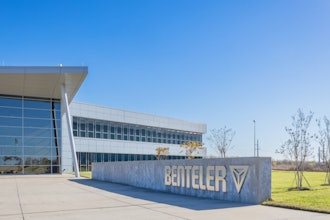This article originally appeared in the July/August 2012 issue of Industrial Distribution. To view it in its original format, click here.
Effective leadership is an active, not passive, process. Leaders get involved in the day-to-day challenges and inspire employees to take risks and rise above the ordinary in their thinking, attitudes, and actions. Leaders know they are not always the innovators; most believe that workplace innovations and especially daily task-related decisions should be made by the employees doing the work. They fully support the actions of their employees and see that they are given the opportunity to create, innovate, and adopt new ideas and methods.
One of a leader’s primary tasks is to develop a sincere interactive leadership style and work climate focused on their employees’ advancement and attainment of goals. Creating a supportive work atmosphere becomes a main ingredient for achievement. Without daily interactive leadership support, very little gets accomplished within an organization.
A totally supportive leadership climate implies establishing shared power, shared risk, and shared accountability. It visibly supports all employees’ actions through mutual respect and trust. Only in this way will there be a willingness on the employees’ part to make the organization a top priority with a shared desire to strengthen it.
Interactive leadership focuses on making the organization’s welfare the number one priority by cultivating each and every employee to support its direction and efforts. Supportive leaders continually emphasize the fact that if the organization wins, everyone wins. Every employee activity that assists and promotes this belief must be nurtured and encouraged.
The thrust of leadership is to support all employees effectively and passionately enough to instill the belief and trust that attainment of collective goals will benefit all involved. To see employees reach this level of trust and security, leaders can do the following:
Link Collective and Management Goals
It is essential that interactive leaders support their employees in all their efforts, especially when it comes to identifying and attaining goals. Before goals can become a reality, leaders must instill in their employees a desire and passion to think in terms of the organization’s best interest. Organizations and companies do not just “pocket profits,” they provide people and families with jobs with which to earn a living. It is in this light that every activity and action needs to be focused on the organization’s advancement.
In order to best support their employees in this effort, leaders must make certain that they develop specific strategies for linking management goals to all individual and collective employee goals. In this way, as the organization succeeds, so do they.
Build a Mutual Interactive Support Network
Interactive leadership and its support is a relationship between leaders and the employees they seek to lead. A failure to understand that leadership is a shared responsibility easily breaks down the support process being actively built within an organization.
Interactive leaders don’t attempt to become heroes by accepting full responsibility for their departments, thinking they should be aware of everything going on and able to solve every problem that arises. They realize this mindset inhibits personal and employee progress and development. It disintegrates the shared vision intended to direct, guide, and support every unit member toward each goal’s attainment.
Help Employees Realize Goals are Cooperative
Leaders interactively support their employees by helping them realize that their goals are cooperative. This is accomplished through applying day-to-day organizational norms, expectations, and standards that encourage them to share information, consider each other’s ideas, exchange resources, and respond to each other’s requests through positive interdependence. Doing this ensures the building of a mutually interactive employee support network.
Effective leaders plant “seed” questions that require employees to gather input from peers before responding. This technique serves to create an environment of active communication on all levels, which instills a high degree of mutual support within the specific organizational unit.
Offer Direct Help and Provide Necessary Resources
Providing ongoing, direct assistance and the resources needed to do the job are concrete signs of cooperative goal attainment. Imparting information on how a newer technology might facilitate completion of an assignment, or offering suggestions as to how to increase personal productivity or decrease wasted time and energy are visible examples of a leader’s desire to actively support all members of their work unit.
This strategy also serves to unify the entire unit, as it actively promotes the general welfare of the employee as well as the organization. It emphasizes that even though assignments vary, everyone has the same basic goal. All tasks and individuals become interdependent in the name of advancing the leader’s vision and organization’s cause.
Distorting or withholding information is a clear sign that an active undermining of a leader is taking place within the organization. This destabilizes the motivational framework within individual work units. It also instills a sense of competition between the leader and employees, and manifests a lack of trust on the leader’s part.
Promote Cooperation
Leaders support each individual member in words and actions demonstrating respect, warmth, and personal acceptance. They resist the urge to make competitive comparisons among employees. Effective interactive leaders reward productive individual and cooperative efforts to develop and attain specific goals and objectives.
The key to moving the organization forward lies not in promoting competition, showing preference for one employee over another, or overpowering people to gain compliance, but in winning their employees’ complete cooperation, trust, and loyalty.
In order to do this, leaders must foster an atmosphere that secures collective participation among their employees. Actively supporting cooperation built on mutual interdependence is the most effective strategy for creating and sustaining strong collaborative relationships. This strategy is successful because it demonstrates both a willingness to be cooperative and an unwillingness to be taken advantage of.
Interactive leaders need to recognize and encourage ongoing positive interaction among employees. This implies actively working to instill cooperative reciprocity that establishes deeper bonds of trust. During this process, employees begin to openly acknowledge that all goals and work-related assignments are collaboratively essential and equally important.
One of the most effective strategies for eliciting cooperative efforts and to display active employee support is to enlarge the “screen of the future.” In other words, leaders must promote the realization among employees that they can expect to be working together as an ongoing group in all future assignments, tasks, decision making, goal setting, and planning.
Employees are much more likely to support one another and their leader when they know they will be involved with each other on a continual basis. This is because an expectation of future interaction encourages employees to actively support and cooperate with one another in the present. Active support on all levels becomes far more common and enduring.
Excerpt: Workplace Interaction: Pinpoint Leadership Skill Development Training Series (Majorium Business Press, Stevens Point, WI 2011) $ 16.95 USD.
Timothy Bednarz, Ph.D, is an author, researcher, consultant, entrepreneur, and innovator. If you are seeking proven expertise and the best practices of interactive leadership and organizational empowerment to train or educate your employees in this area, refer to Improving Workplace Interaction: Pinpoint Leadership Skill Development Training Series. Learn more at www.majoriumbusinesspress.com.























